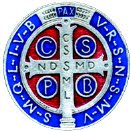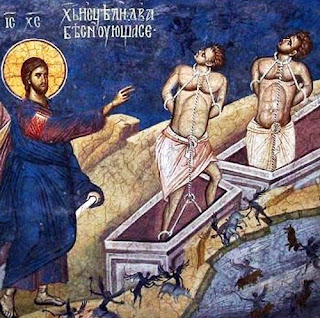Radio Vatican,
5 decembrie, 2010
Duminica XXVIIa după Rusalii
În numele Tatălui, al Fiului şi al Spiritului Sfânt, Amin!
Iubiţi seminarişti, iubiţi ascultători Radio Vatican, ne aflăm deja în luna decembrie şi aerul sărbătorilor de iarnă devine tot mai dens şi ne aduce aminte tot mai mult de Praznicul se ce apropie – Naşterea Domnului Isus Hristos. Dar să nu ne lăsăm duşi de val şi să scăpăm din vedere perioada importantă în care ne aflăm, perioadă în care ne pregătim sufleteşte pentru acest eveniment important al mântuirii noastre. Cu siguranţă că pregătirile nu încetează – se fac cumpărăturile, luându-se cu asalt supermarketurile, se intră în criză de timp şi nu reuşim să le mai facem pe toate şi din păcate partea spirituală a vieţii noastre rămâne lăsată de-o parte foarte uşor.
Suntem aşadar în plin Post, fapt pentru care suntem călduros invitaţi să dăm sufletului ce este al sufletului, pregătindu-l cum se cuvine pentru ca Pruncul Isus ce se va naşte peste puţin să găsească un sălaş cald.
Astăzi ne aflăm în duminica a 27-a după Rusalii, iar Evanghelia ne prezintă o vindecare pe care o face Isus, stârnind pe de o parte bucuria şi aprecierea oamenilor simpli din jur iar pe de altă parte invidia şi mânia mai marelui sinagogii.
Aflat în sinagogă unde învăţa într-o zi de sâmbătă Isus vede pe o femeie gârbovă care era acolo şi asculta învăţătura lui Isus. Spre deosebire de alte vindecări pe care Isus le-a făcut la cerinţa bolnavilor sau a celor apropiaţi acestora, de această dată El acţionează de la Sine. Nu aşteaptă cerinţa bolnavei ci este El cel care ia atitudine în vederea dezlegării acesteia. A chemat-o la sine şi i-a zis: femeie, eşti dezlegată de neputinţa ta!
Trebuie subliniat motivul suferinţei acestei femei. Ea era ţinută sub legătura Diavolului de optsprezece ani şi nu se putea îndrepta nicidecum. Foarte importantă este această imagine pe care ne-o propune textul evanghelic. Era ţinută legată de Satana şi nu putea privi în sus – spre Dumnezeu, spre aproapele, putând privi doar în jos, spre pământ.
Dragii mei,
Ceea ce ne ţine pe fiecare dintre noi aplecaţi spre pământ este păcatul. Diavolul încearcă să ne gârbovească pe fiecare ispitindu-ne la păcat ca apoi, cu păcatul în suflet, să nu putem privi în sus! Să fim legaţi de pământ şi să nu ne mai putem îndrepta. Iar în acest moment intervine puterea harului lui Dumnezeu! Acum intervine Isus care a dezlegat-o pe femeia gârbovă dându-i posibilitatea de a privi din nou în sus, spre Dumnezeu. Acum intervine Isus în viaţa fiecăruia dintre noi pentru a ne dezlega de povara păcatului şi pentru a ne îndrepta, pentru a putea privi pe aproapele în ochi, pentru a privi spre Dumnezeu…















